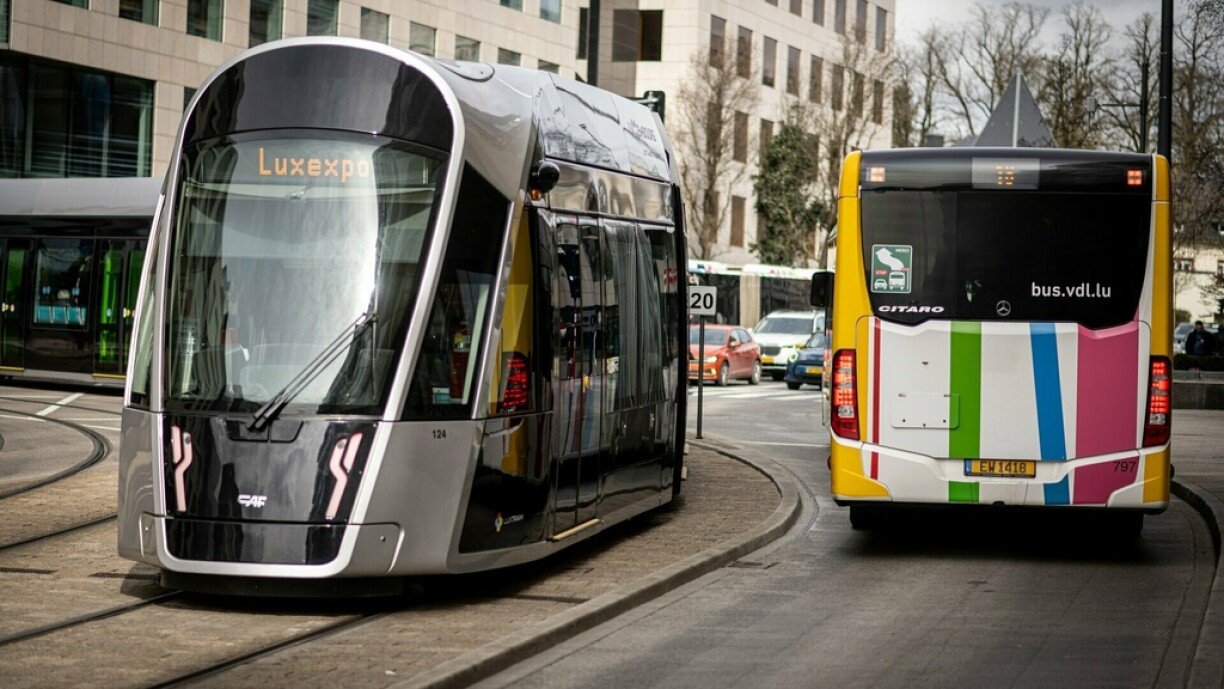
More people are using public transport since it became free, but it is also costing the country significantly more.
Previously, ticket sales from public transport in Luxembourg generated around 41 million euros annually, covering approximately 8% of the total yearly costs, which exceeded 500 million euros. This revenue stream ended in March 2020 with the introduction of free mobility.
The operating costs of public transport have increased considerably in recent years: from €590 million in 2020 to €905,7 million in 2024.
In 2025, according to the Ministry of Mobility and Public Works, the budgeted operating costs for public transport are €1.1 billion. This budget is allocated across various types of transportation as follows:
In 2024, the Luxembourg tram network recorded 31.7 million passengers, up from 28.7 million in 2023. The RGTR bus network, which connects towns and rural areas, now carries around 52.9 million passengers, reflecting its continued role as the backbone of the public transport system.
Train usage has also consistently grown, especially among cross-border workers commuting from France, Germany, and Belgium. In 2024, CFL welcomed 31.3 million passengers on board its trains, surpassing the previous record of 28.7 million in 2023 - an increase of 10% in just one year.
With 9.9 million passengers in 2024, the Luxembourg – Esch/Alzette – Rodange line remains the most heavily used in the rail network. The strongest growth, however, was recorded on the Luxembourg – Wasserbillig – Trier line, with an increase of 18.01% compared to 2023.
Read also: Train travel becomes increasingly popular across Luxembourg
People in Luxembourg have mixed feelings about public transport – they like some things, but are also upset about problems with safety, delays, and how easy it is to use, after the country made it free for everyone.
Sara, working in Luxembourg since 2019, reports using public transport daily, suggesting increased accessibility for all socioeconomic groups. However, she perceives a decline in safety and cleanliness, particularly in trams and buses, stating: “The public transport is not as safe as before because all the people have access. Trams are dirty; buses are as well.”
Kimmo’s experience reflects a more pragmatic view. He has lived in Luxembourg since 2018 and uses a mix of bike, car, and public transport, emphasising that convenience and time, not cost, are the main factors in choosing a mode of transport.
He does, however, appreciate the financial benefit of free transport for non-daily trips. He notes it has a positive effect on traveling with public transport outside the commute. Kimmo also believes traffic conditions have improved since 2018, possibly due to telework.
Still, he laments overcrowding: “I remember it was so comfortable to travel with the tram in 2018–2020, because it wasn’t so popular. Now with the extension of lines, it’s always packed during rush hour.”
One resident, who has lived in Luxembourg for around three and a half years, but who asked to remain anonymous, welcomes the affordability and generally modern feel of the system. “I’m quite satisfied with the public transport. Particularly because it’s free, though it’s paid with our taxes.”
But satisfaction quickly turns to frustration when discussing bus reliability, especially with line 10, the only option to leave the Atrium Business Park: “The bus is most of the time late in the evening, when I have to leave the office. I have to wait 30 minutes for a 10-minute ride.” She ends on a hopeful note, welcoming the tram extension to the airport and wishing for similar investment in problematic routes.
Read also: Opinion – Is free public transport costing us more than we think?